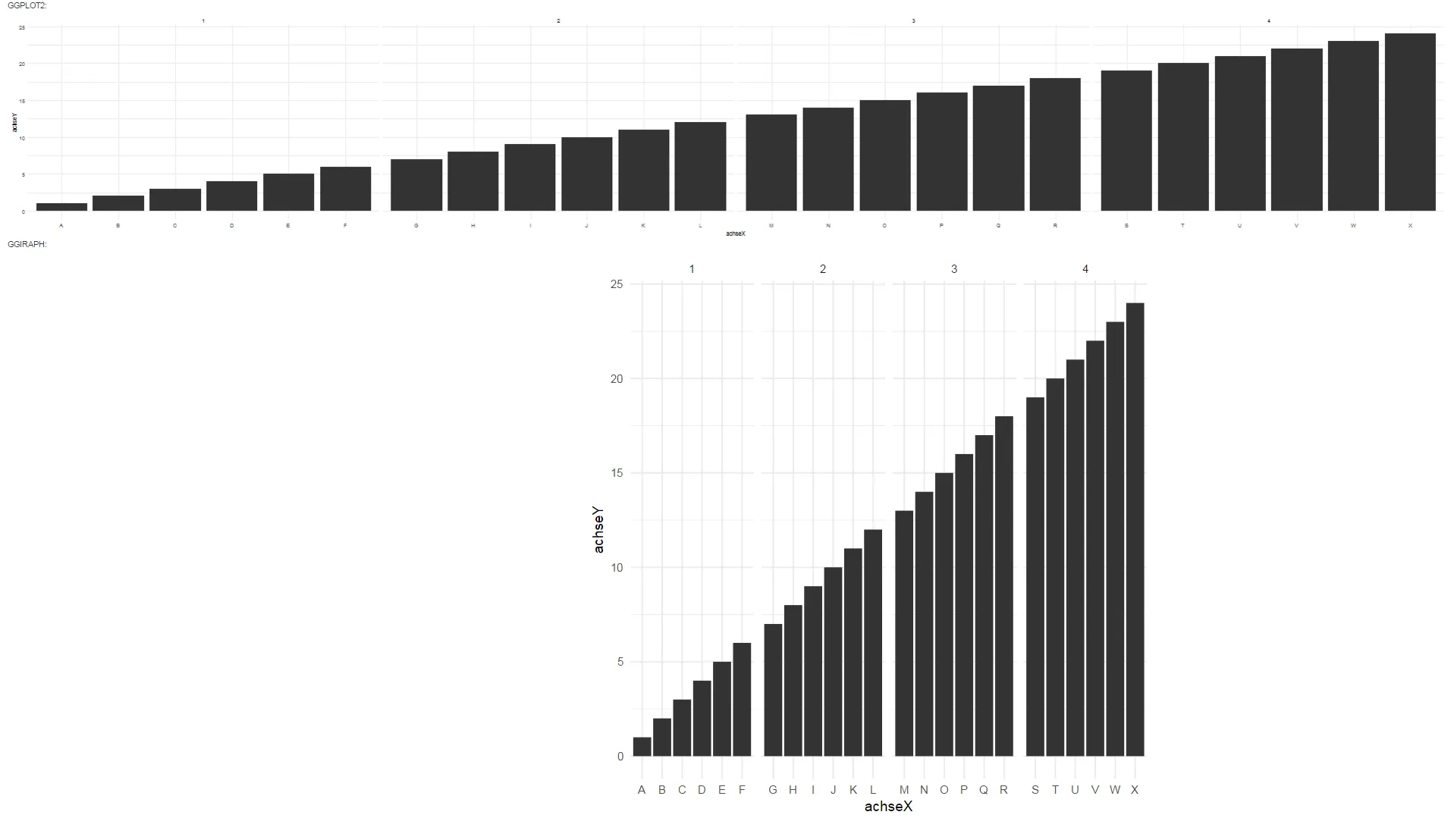这是我的代码:
library(shiny)
library(ggplot2)
library(ggiraph)
df <- data.frame(achseX = LETTERS[1:24], achseY = 1:24, facetX = as.factor(rep(1:4, each = 6)))
server <- function(input, output) {
output$ggplot <- renderPlot({
ggplot(data = df) + geom_bar_interactive(aes(tooltip = achseY, x = achseX, y = achseY), stat = "identity") +
theme_minimal() + facet_grid(.~ facetX, scales = "free_x")
})
output$plot <- renderggiraph({
gg <- ggplot(data = df) + geom_bar_interactive(aes(tooltip = achseY, x = achseX, y = achseY), stat = "identity") +
theme_minimal() + facet_grid(.~ facetX, scales = "free_x")
return(ggiraph(code = print(gg), selection_type = "multiple", zoom_max = 4,
hover_css = "fill:#FF3333;stroke:black;cursor:pointer;",
selected_css = "fill:#FF3333;stroke:black;"))
})
}
ui <- fluidPage(
"GGPLOT2:",
plotOutput("ggplot"),
"GGIRAPH:",
ggiraphOutput("plot", width = "500px", height = "1000px")
)
shinyApp(ui = ui, server = server)
结果如下图所示:
 从代码中可以看出,第一个条形图是一个正常工作的
从代码中可以看出,第一个条形图是一个正常工作的ggplot。它可以响应网站并具有矩形格式。相反,ggiraph保持在正方形格式中,不适合页面。引用块中问道:“我该如何让ggiraph看起来像ggplot呢?”
我尝试了几种宽度和高度参数的组合,包括
width =“auto”和height =“auto”。这使得ggiraph适合页面,但仍然是一个正方形格式。